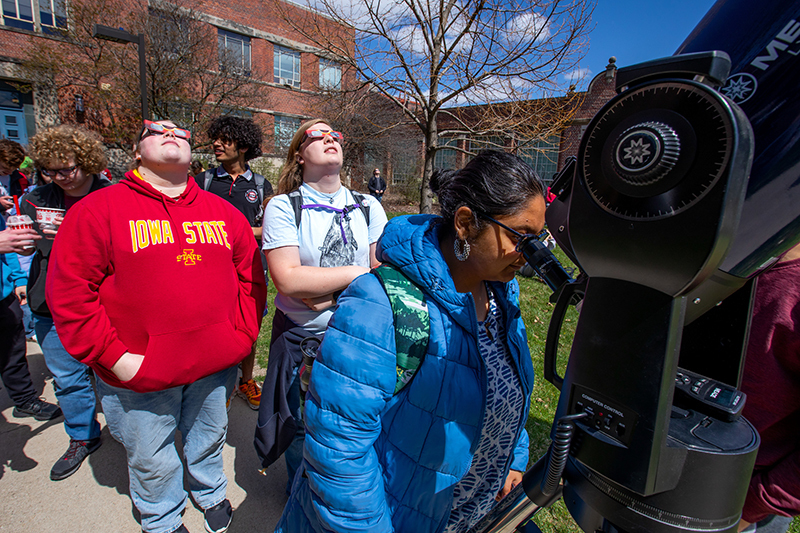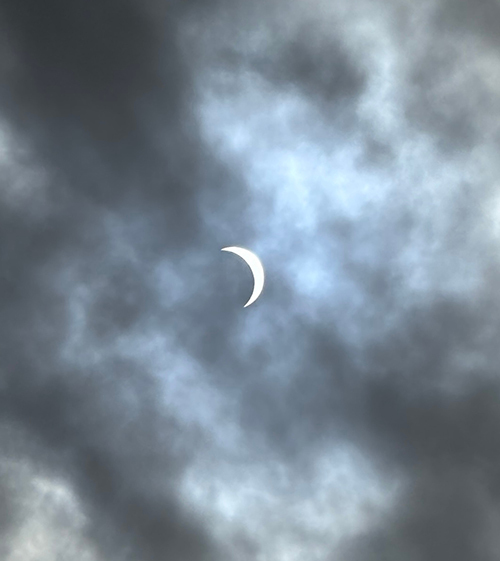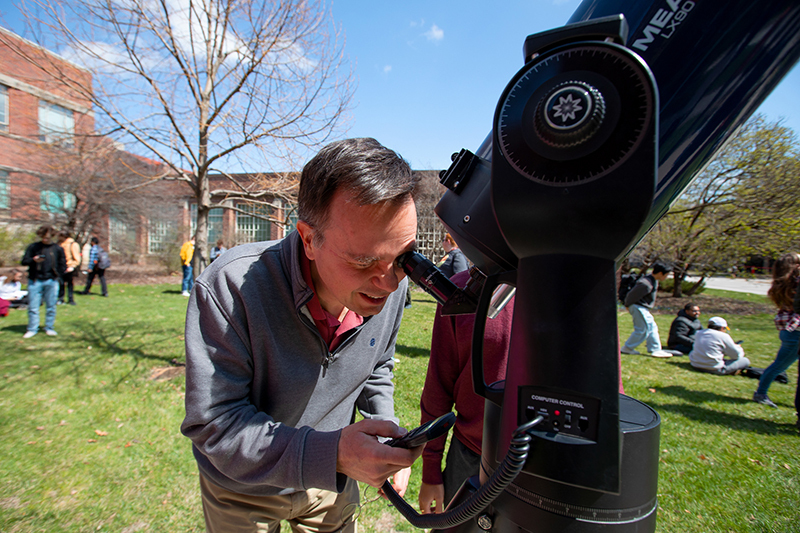
Graduate student Punya Aragula, human-computer interaction, views the solar eclipse through a telescope fitted with an optical solar filter Monday afternoon. Seniors Kristy Parker (left) and Blake Stumpf wait for their turn. Photos by Christopher Gannon.
It turns out a solar eclipse -- even a partial one -- does wonders for community building. Two hundred or so people gathered on the small lawn west of Physics Hall Monday afternoon to experience the moon's eclipse of the sun, one of many such lawns around campus. Nearly all of them packed their smartphones; less than half arrived with eclipse-viewing safety glasses. No matter.

They generously passed around their cardboard glasses and scanned websites on their phones for helpful details to share about what they were marveling at. There even were a few kitchen colanders among the group, used to capture crescent-shaped shadows on the pavement.
Associate professor of astronomy Charles Kerton moved two telescopes outside for eclipse views other than the naked eye: the photosphere (or sun surface) and the chromosphere, a thin plasma layer visible only during a solar eclipse. Both lie inside the corona gas layer. Iowa Staters patiently waited in lines never shorter than 20 people to view the eclipse and try to capture that image on their own smartphones.
It's not a great photo, Kerton said, but about 80% took a photo through the telescope's eyepiece.
A few overheard comments (many conversations weren't in English):
- "That's nuts!"
- "It's awesome."
- "It's almost better in the cloud cover."
- "Holy S*3t!!!"
- "We're so lucky we're in the Goldilocks zone. We have everything."
- "Europe gets the next one in a year and a half."
- "Ohhhhhhhhh. Ohhhhhhhhh!!"
- "That looks so cool."
- "That was worth waiting in line."

Associate professor of astronomy Charles Kerton adjusts the site on one of two telescopes he moved outdoors Monday for solar eclipse viewing.

